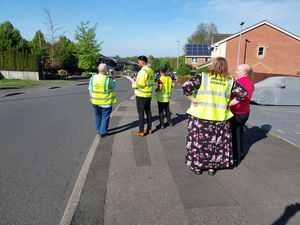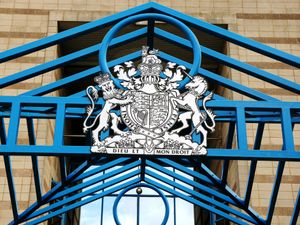Sandwell Council knew it had no up-to-date right of way map for five years
Sandwell Council has been found to be in breach of its statutory duties after reports show it knew for at least five years it did not have an up-to-date map of public rights of way in West Bromwich.

The report, presented to Sandwell Council’s cabinet this week, approved recommendations to write to the Department for Environment, Food & Rural Affairs, requesting 'formal abandonment’ of the West Bromwich draft map, and that it would seek to create a ‘definitive’ map of all public rights of way in the town.
It comes as the Labour-led local authority believed without swift remedy, it would be “increasingly probable” the council could face legal action. A barrister specialising in public rights of way told Sandwell Council it was “very clear”, without a definitive map, the council is in breach of its statutory duties.
According to the report, Sandwell Council knew as far back as September 2016 that it was in breach of its statutory duties with no real defence against judicial review.
Advice sought during that period concluded: “The alternative proposal... has the benefits which have been identified by the council and which I acknowledge... but the council [would be] protracting the already lengthy period over which it is in breach of its statutory duty and for a significant period. [Therefore] I am unable to advise that the alternative proposal be pursued.”
The council’s own report admits the cost of procuring and financing a new definitive map would be estimated at £340,000 over five years. The council claims it does not employ a dedicated public rights of way officer. They said while steps are being taken to recruit this post from within existing budgets, there is a “national shortage” of qualified people.
Sophie Gordon, campaigns officer at Cycling UK: “It’s been a legal requirement since the 1950s for highway authorities to produce a definitive map of public paths, so it’s quite astonishing that the map for West Bromwich has still not been completed.
“It means that public rights of way in the area are not protected for public use and as a result, we’ve seen some of them lost already, being blocked or even concreted over by new developments.
“Access to nature is incredibly important for our health and wellbeing, and the footpaths and bridleways that enable residents to connect to green spaces are under threat if they are not officially recorded on the map. The definitive map should now be created as a priority, and a plan put in place to improve the links in the network to make up for those which have been lost over the decades.”
The Black Country borough was first created in 1974, and many of the definitive maps already created by historical local authorities were transferred to Sandwell Council, with the exception of West Bromwich.
West Bromwich has 159 recorded public rights of way. Of these, 51 are currently obstructed in some way, with some developed over.
A draft map was published by West Bromwich county borough in 1954 with several objections received. Sandwell Council noted in its own report the objections were ‘not resolved’ and were further stalled. The council admitted the recorded routes on the draft map are not ‘definitive’ highways, and so do not automatically benefit from protection under the Highways Act 1980.
This year, campaigners celebrated a victory against the national government, in the battle for public access to the countryside, after the Government agreed to cancel a deadline to register forgotten footpaths.
Individuals who often take shortcuts to their walking destination were given until January 1, 2026, to apply to save any rights of way through private land that existed before 1949, but did not appear on official maps, after which they will lose the opportunity to add them to maps.
Heather Clatworthy, paths manager for the Ramblers, said: “The failure of previous councils to fulfil their duty to keep and update the definitive map for over four decades means that vital paths used and enjoyed by local residents are not protected by law. In addition, the high number of obstructed paths is also a barrier to people being able to enjoy the proven health and wellbeing benefits of being able to easily walk in their local area.
“We welcome the report from Sandwell Council and hope that this will be the start of better provision for public paths in West Bromwich. We look forward to working together with them to ensure the definitive map is up to date and accurate, while Ramblers volunteer path maintenance teams would be happy to work together with them to help with the removal of obstructions.”
Kate Ashbrook, general secretary of the Open Spaces Society, said: “We are dismayed that the West Bromwich part of Sandwell is still without an official rights-of-way map, 70 years after councils were required to produce one.
“This means that countless paths will have been built over and lost because they were not recorded, and the residents have had their rights taken from them by stealth. We urge the council to deal with this appalling deficiency as soon as possible.”
Peter Hughes, cabinet member for regeneration and growth, presented the report and said: “We inherit things as new portfolio members, and this is a particular item which has been inherited that should have perhaps been grasped a couple of decades ago, but I’m the chap to be asked to present this anyway.
“It’s been a statutory requirement since 1949 for all local highway authorities in England to have a definitive map and statement that provides conclusive evidence of public rights of way in their area.
“Since most definitive maps were prepared in the decade or so after 1949, in Sandwell these were prepared by the former councils that existed at that time. As a result, Sandwell has separate definitive maps covering the area of the former West Bromwich county borough. A draft map was published in 1954.
“Due to unresolved objections, this map was never formally adopted by West Bromwich County Borough Council, and as such, as always reminded draft stage. This leads to uncertainty for landowners and can impact on property sales, where the public right of way cannot be conclusively established.
“By not having a definitive map, the council is in breach of its statutory duties which requires all local authorities to bring definitive maps up to date as soon as is reasonable.”





